This is one in a series of posts on the Sony alpha 7 R Mark IV (aka a7RIV). You should be able to find all the posts about that camera in the Category List on the right sidebar, below the Articles widget. There’s a drop-down menu there that you can use to get to all the posts in this series; just look for “A7RIV”.
In the previous post, I looked at the IBIS performance of the Fuji GFX 100 with the 110 mm f/2 lens. In this post, I will examine the IBIS efficacy with a lens of equivalent focal length on the a7RIII and a7RIV. The lens I chose was the Zeiss Batis 85 mm f/1.8. That lens is optically stabilized, which means that the firmware in the camera sends yaw and pitch movement instructions to the lens rather than the IBIS, but the improvements in the a7RIV over the a7RIII appear to be in the firmware rather than the IBIS mechanism itself. I’ve done one other a7RIII/a7RIV IBIS test on a non-stabilized lens, and I will do more.
I sat on an armless rolling secretary’s chair for the captures. I held the camera in a modified Pete Turner grip: right hand on the camera grip, left palm on the bottom of the camera, and left fingers extended to just short of the focusing ring on the lens.
Here’s what the camera saw:
The slanted edge target is in the middle. The crosshatched pattern is one that I got from Horshack, and makes it easy for autofocus systems to acquire accurate focus.
With both the a7RIII and a7RIV, I used the following test conditions:
- AF-C
- Medium spot, centered
- Focus priority
- Continuous low drive mode
- Electronic shutter
- Lossless compressed Raw
- ISO 100
- f/4
- Exposure mode A, center weighting
- Aputure 120d II LED, 12-inch parabolic reflector, remotely controlled
With IBIS on, I turned the light up all the way, which gave me a shutter speed of about 1/400 second. I made about 25 continuous-drive exposures, turned the light down about a stop, and did it again. I kept on doing that until the 1/25 second, then turned IBIS off and ran the series again.
I ended up with about 600 images. I developed them in Lightroom, with default settings except for the following:
- White balance set to flash
- Adobe monochrome profile
- Sharpening turned off
- Noise reduction turned off
Using my automatic registration program, I adjusted the cropping in Lightroom for each image so that they were centered. I computed the MTF50 — a nice proxy for sharpness — for all the images with Imatest with the region of interest being a horizontal edge (Just to make sure, I also looked at vertical edges, with about the same results, but those data aren’t presented here). Imatest spit out the data in cycles per pixel. With my new Matlab code, I converted that to cycles per picture height to put both cameras on more of an even footing.
Here are the results for the a7RIV:
The vertical axis is the MTF50 in cycles per picture height. The horizontal axis is the denominator of the shutter speed — 1/100 second is plotted as 100. The heavy lines are the mean (aka mu, aka average) values. The thinner lines are the mean minus the standard deviation (aka sigma). The black x’s are the individual exposures. This is excellent performance. Most people are going to consider anything with an MTF50 of over 1500 cy/ph to be very sharp. There is virtually no difference in mean sharpness at all the shutter speeds tested. The same is true of scatter. In this test, autofocus errors are included in the results, which may contribute to the scatter.
With IBIS off:
Both at once, without the data points themselves plotted:
The IBIS data shows good (mean > 1500 cy/ph MTF50) down to 1/25, and acceptable results to 1/8 second. I am surprised by the low MTF50s for the non-IBIS case at 1/400 second. I suspect that would go away if I repeated the test. I am also surprised at how well the IBIS cases look at very slow shutter speed. I never got those kinds of results when I shot standing up. In fact, I had to go back and add low shutter speed captures after I saw the result where the slowest shutter speed I used was 1/25. The improvement of the IBIS-stabilized case over the non-IBIS one appears to be about 3 and a half stops.
Now for the a7III — I didn’t do the slow shutter speeds for this one:
And with IBIS off:
Both IBIS and non-IBIS data:
A comparison of the a7RIV and a7RIII:
The a7RIV has better results because of its higher-resolution sensor.
And, for completeness, a comparison of the a7RIV and the GFX 100 with an equivalent lens:
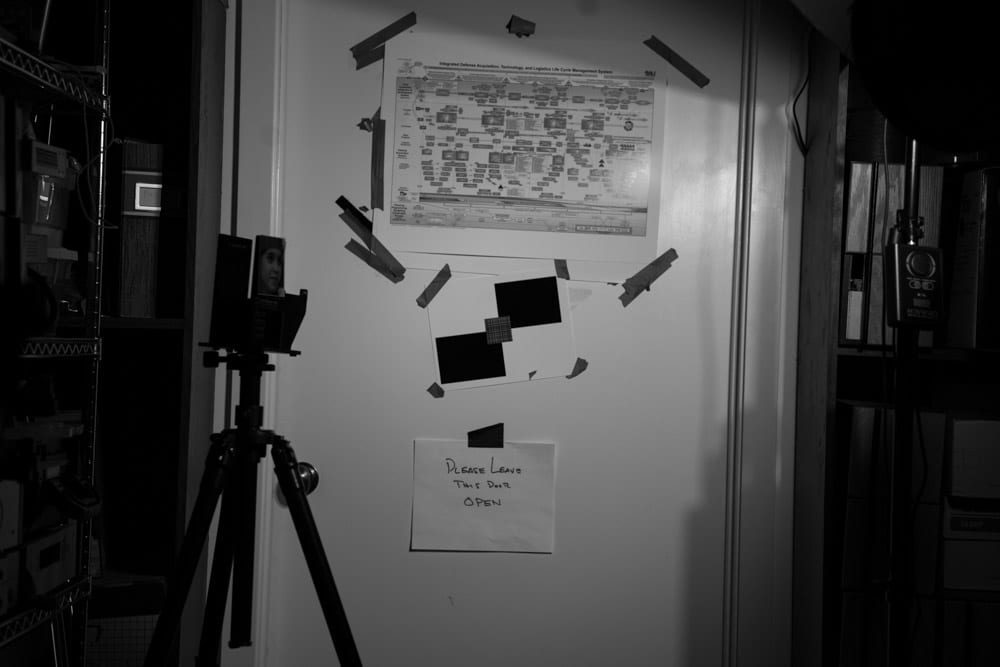
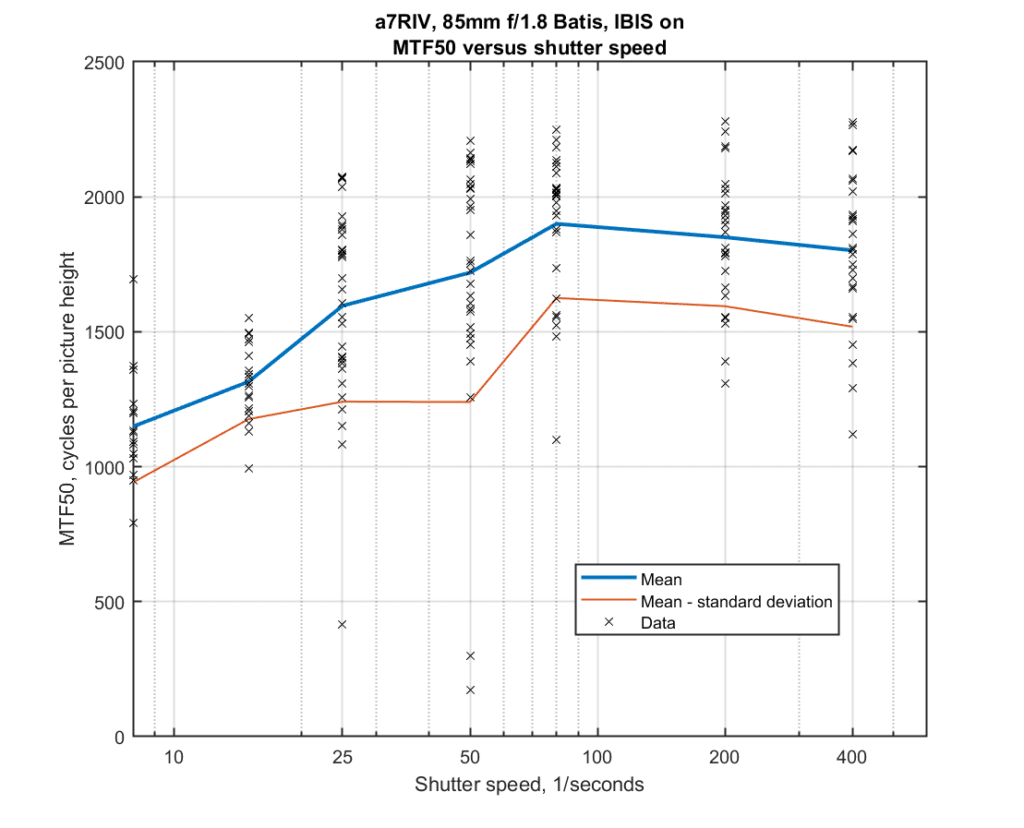
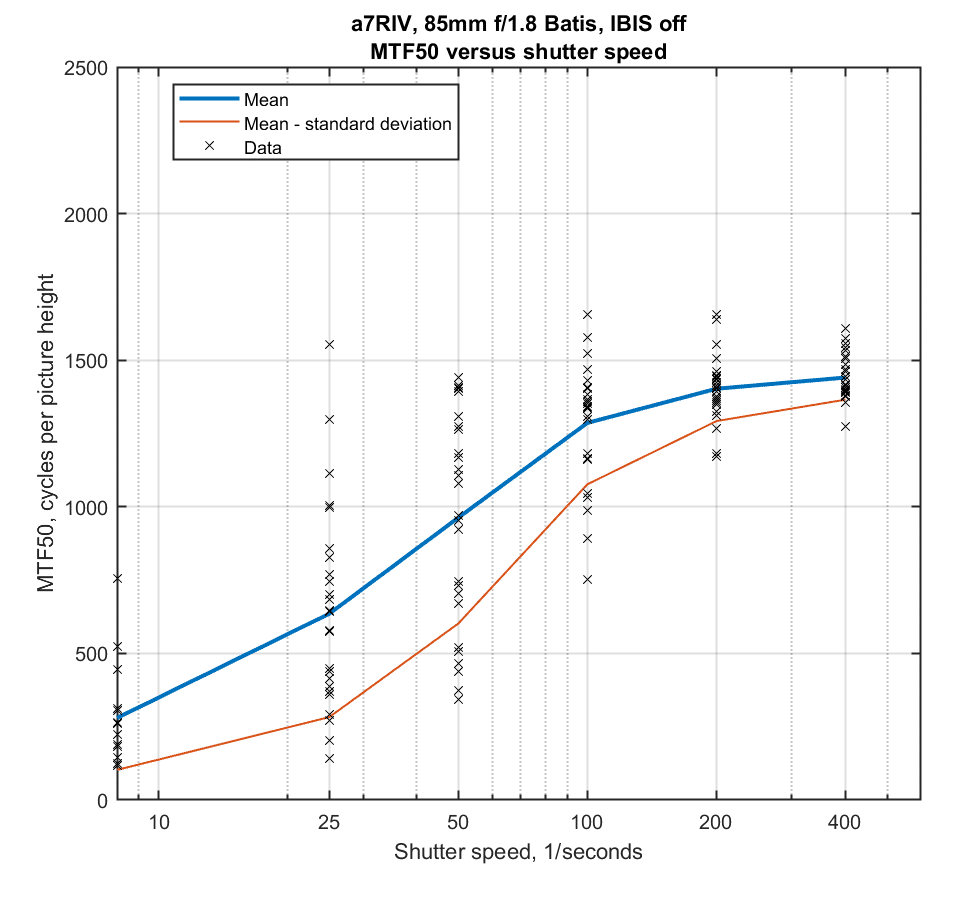
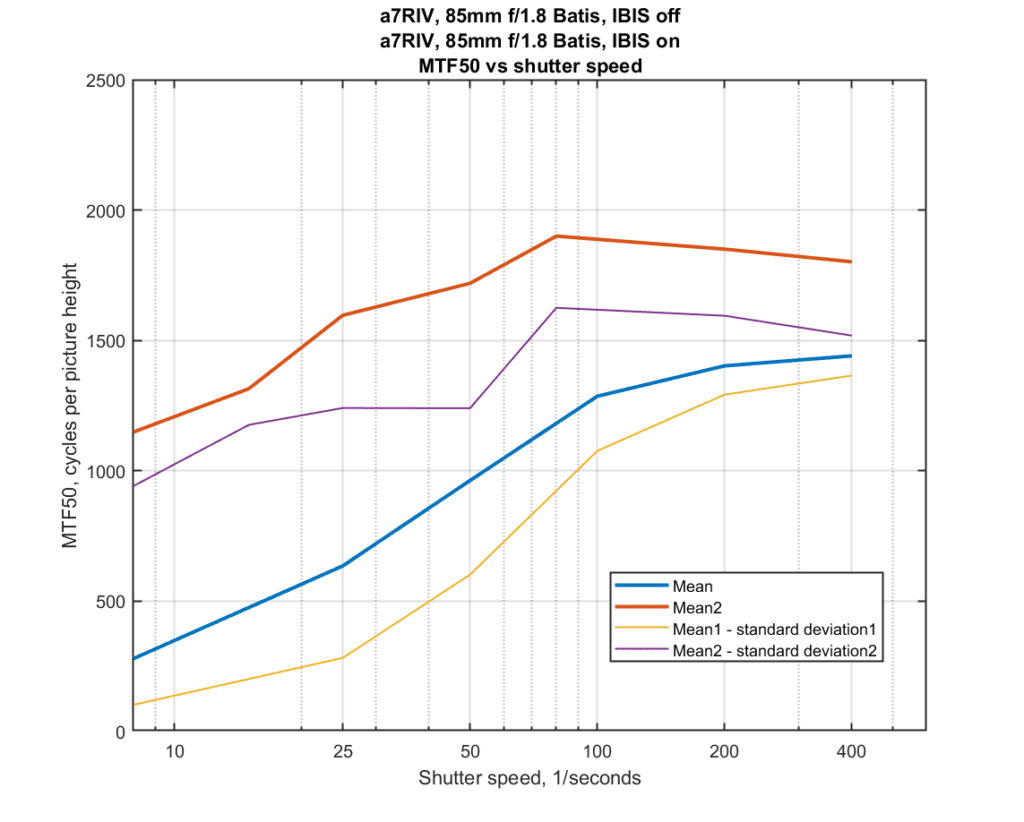
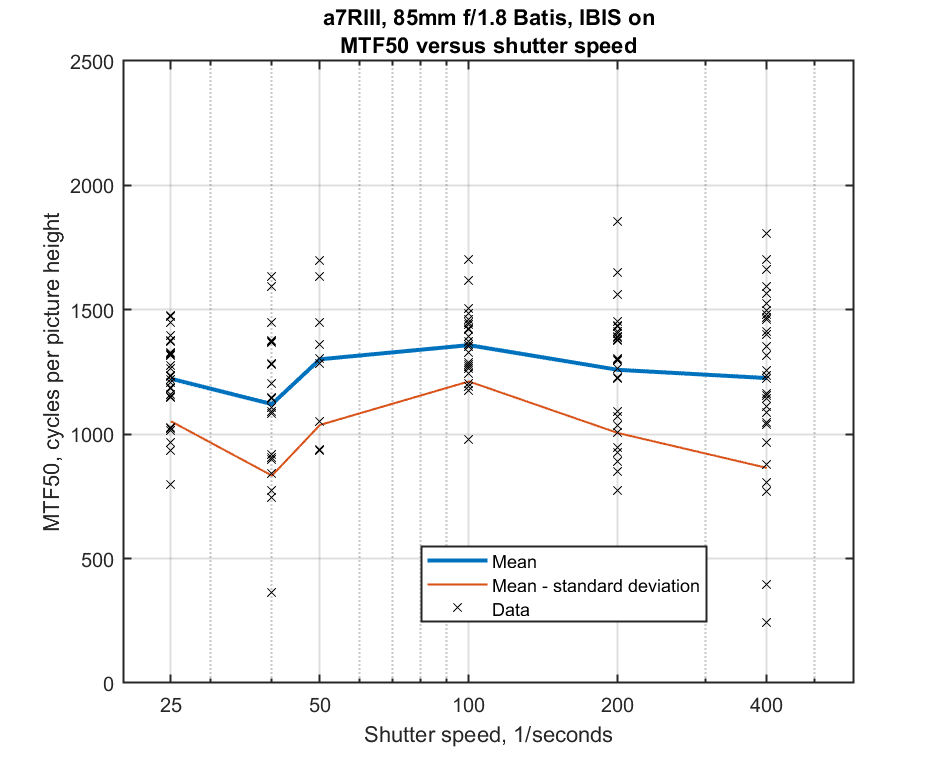
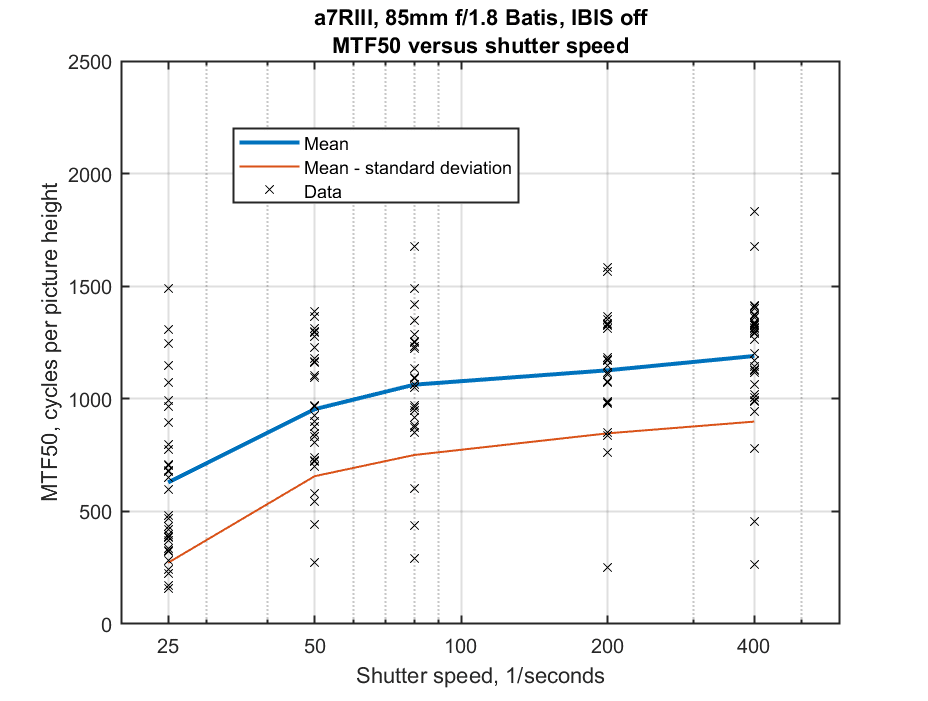
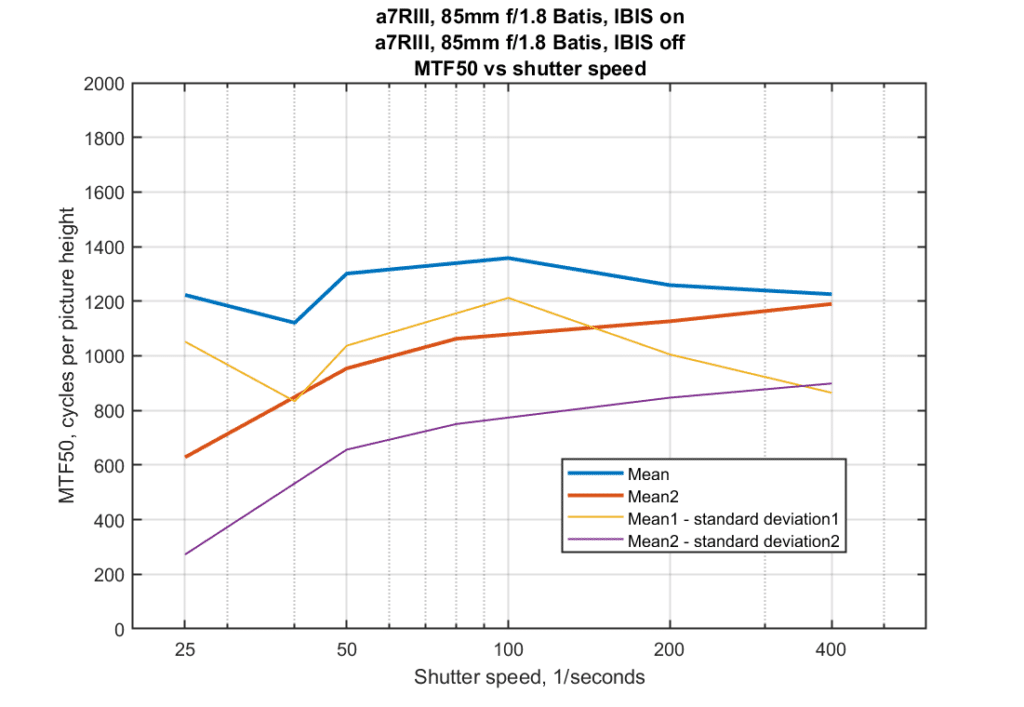
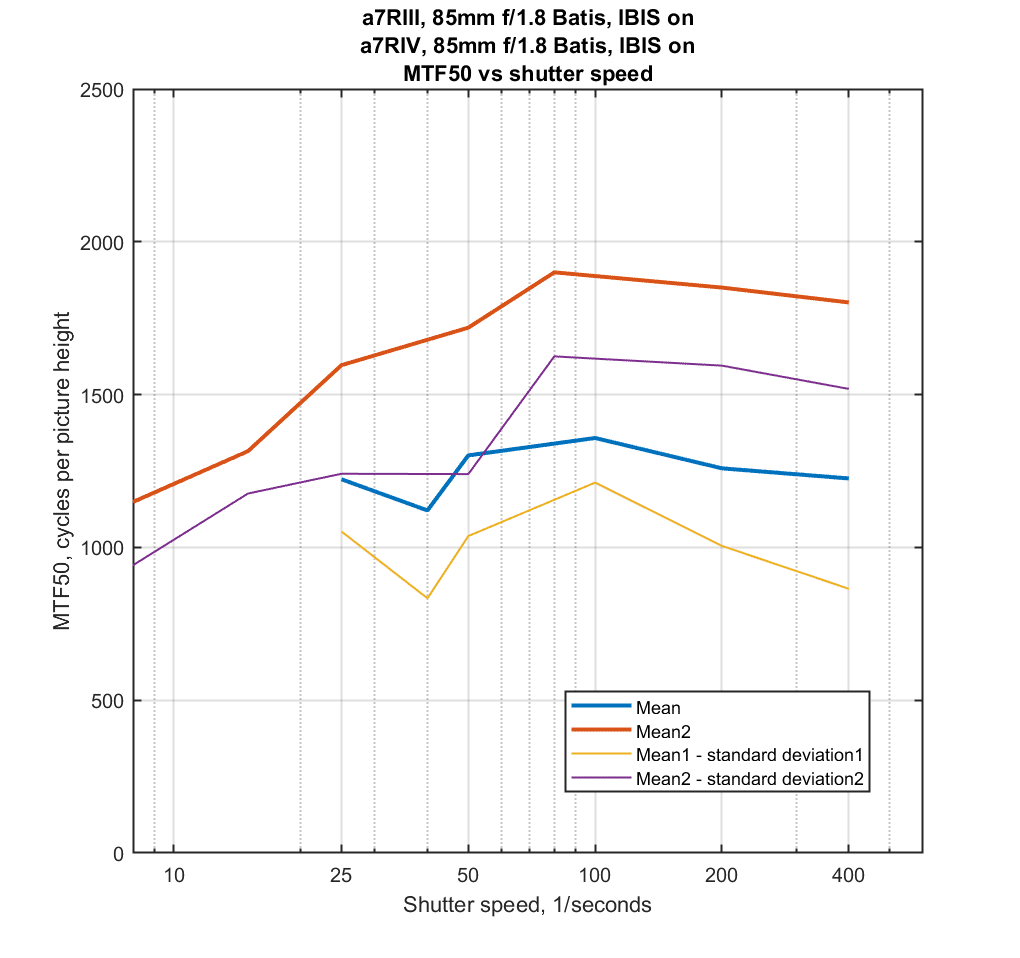
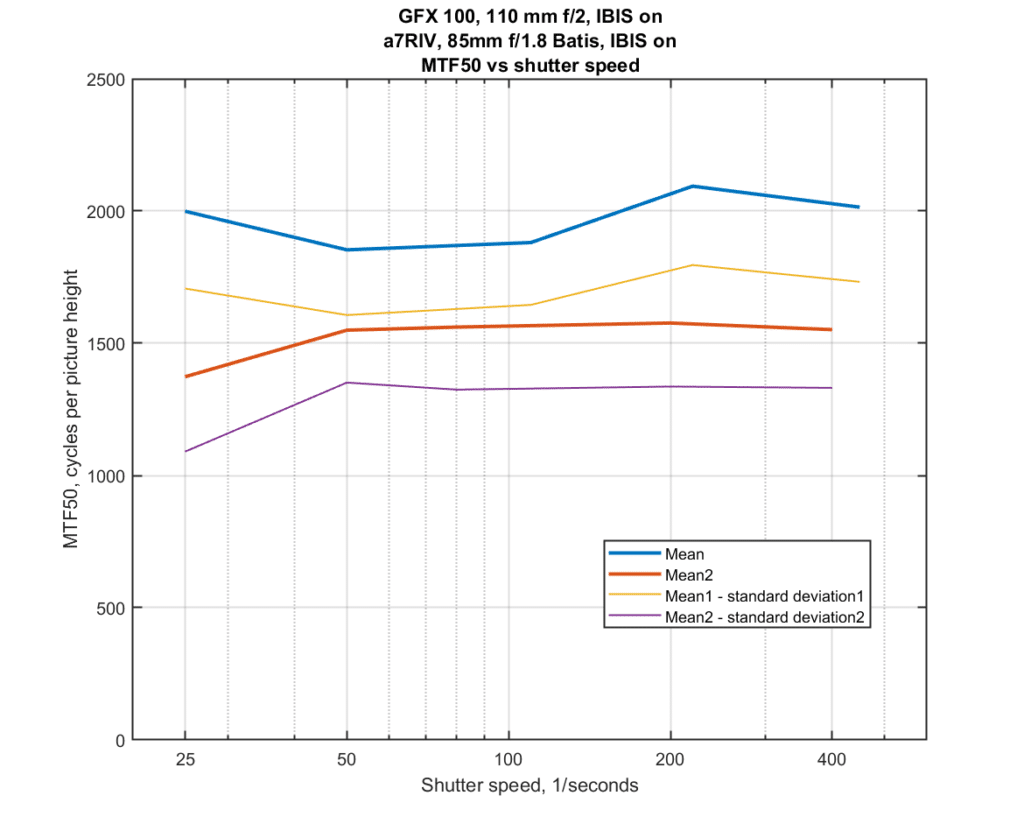
Jörg says
How does the A7RIV reaches 1800 cycles in the second last picture, where in the last ist reaches only 1550 cycles for arround 1/80 of a sec.
Kind regards, Jörg
JimK says
In the second to last graph, the a7RIV mean line, which is red, is about 1800 cy/ph at 1/80 second.
In the first graph, the a7RIV mean line, which is blue, is about 1800 cy/ph at 1/80 second.